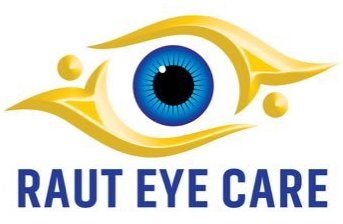Introduction
Visual clarity is a fundamental aspect of our lives, and for those who rely on corrective eyewear to see clearly, the idea of reducing or eliminating the need for glasses or contact lenses can be enticing. Advanced Surface Ablation (ASA) surgery, also known as photorefractive keratectomy (PRK), is a revolutionary procedure that aims to correct refractive errors and reduce the dependence on corrective lenses. In this article, we'll delve into the details of ASA surgery, its benefits, the procedure itself, and what to expect during recovery.
Understanding Refractive Errors
Refractive errors are common vision problems caused by the shape of the eye. The most prevalent types include myopia (nearsightedness), hyperopia (farsightedness), and astigmatism. These conditions occur when the cornea or lens does not bend light correctly, leading to blurry vision. Corrective lenses compensate for these errors by altering the way light enters the eye.
What is ASA Surgery?
ASA surgery is a refractive procedure that reshapes the cornea's surface to correct refractive errors and reduce dependence on corrective eyewear. It is a suitable option for those who are not suitable candidates for LASIK due to thinner corneas or other considerations. ASA involves removing a small amount of corneal tissue, altering its curvature to enable proper light focusing onto the retina.
The ASA Procedure
Pre-Operative Assessment: A comprehensive eye examination is conducted to determine your suitability for ASA surgery. This includes measuring your refractive error, corneal thickness, pupil size, and overall eye health.
Anesthetic Eye Drops: Before the surgery begins, anesthetic eye drops are administered to numb the eye and ensure a painless procedure.
Corneal Epithelium Removal: The surgeon gently removes the thin layer of corneal epithelium (outer layer of the cornea). This step is what distinguishes ASA from LASIK, where a flap is created.
Laser Reshaping: An excimer laser is then used to reshape the cornea's curvature by precisely removing tissue. The laser's ultraviolet light breaks down corneal tissue without generating heat, minimizing damage to surrounding tissue.
Post-Operative Care: A bandage contact lens may be placed on the eye to protect it during the initial healing phase. Antibiotic and anti-inflammatory eye drops are prescribed to prevent infection and promote healing.
Benefits of ASA Surgery
Non-Invasive: ASA surgery does not involve creating a corneal flap like LASIK, making it suitable for individuals with thin corneas.
No Flap-Related Complications: Since no flap is created, there is a reduced risk of flap-related complications such as dislodgement or wrinkling.
Minimal Discomfort: While there might be some discomfort during the initial healing phase, ASA surgery is generally less painful than other procedures.
Suitable for Various Refractive Errors: ASA can effectively correct myopia, hyperopia, and astigmatism, offering a versatile solution for a range of vision problems.
Recovery and Expectations
The initial recovery period after ASA surgery is crucial for achieving optimal results. Here's what you can expect:
Vision Improvement: Vision may be hazy or fluctuating during the first few days, but it gradually improves over the following weeks.
Avoidance of Irritants: It's essential to avoid eye irritants such as smoke, dust, and bright lights during the recovery period.
Follow Medical Advice: Adhering to the prescribed regimen of eye drops and attending follow-up appointments is vital for successful healing.
Stabilization: It may take several weeks for your vision to stabilize completely. Full visual acuity may take up to a few months.
Conclusion
ASA surgery offers a promising avenue for those seeking freedom from glasses or contact lenses. As with any medical procedure, consulting with an experienced ophthalmologist is crucial to determine your suitability for ASA surgery. By understanding the process, potential benefits, and recovery period, you can make an informed decision about whether ASA surgery is the right choice for achieving clearer, unaided vision.

